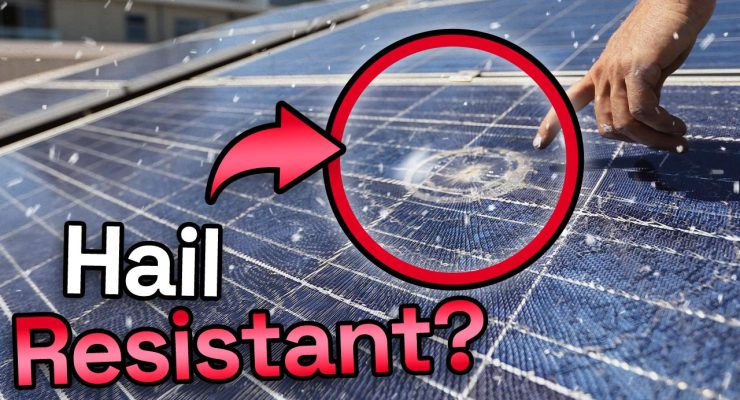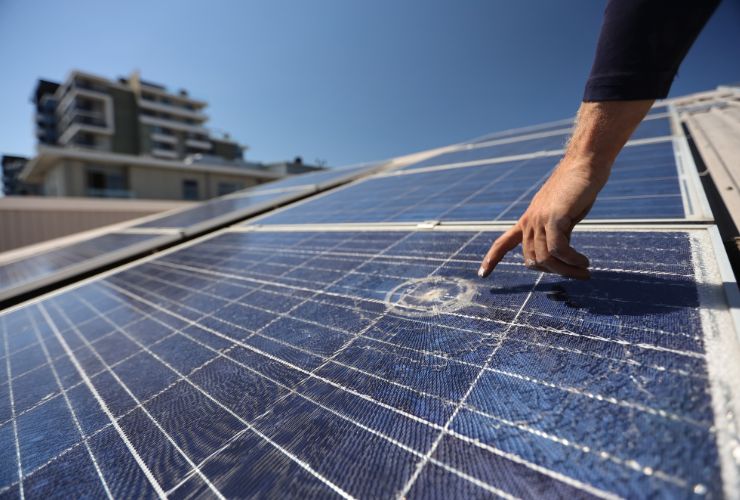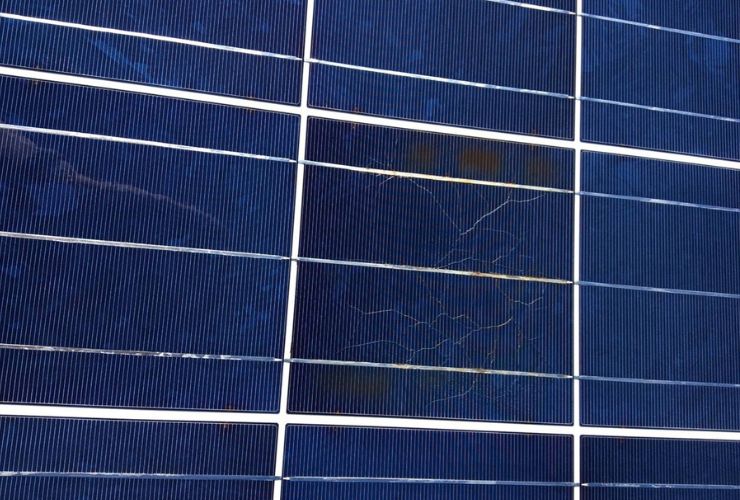
Fast read
Solar panels are made to withstand weather, even in severe conditions like hail or thunderstorms. For example, tempered glass, used in constructing solar panels supplied in Australia, can withstand hailstones up to 50 cents in diameter.
Small hailstones won't harm the panels, but more giant hailstones can seriously damage them. So before being sold in Australia, solar panels must withstand a hail resistance test that entails being hit by hailstones up to 25mm in diameter, travelling at a speed of almost 100km/hr.
The safest way to safeguard your solar panels is to insure them with house and contents coverage. Your panels must be replaced if hail damages them because they cannot be fixed. After a hailstorm, it's critical to look for hail damage and contact your insurance provider.
Can hail damages your solar panels?
With Australia’s unpredictable climate, you never know what’s around the corner. What if it hails? Will hail damage solar panels?
Many people are concerned that their panels will crack and need replacing. Below is everything you need to know about solar panels and hail.
Solar panels are designed to be weather resistant, even in more extreme weather situations such as thunderstorms or hail.
Australian hail resistance standards
Solar panels must pass the manufacturer’s hail resistance test before being put on the market. The moderate test involves the solar panels getting struck by hailstones with a diameter of up to 25mm with an impact close to 100km/hour.
The best way to protect your solar panels from hail is to ensure your home and content insurance covers them.
How to check for hail damage on your solar panels
After a hail event, it is always advisable to ask your local solar supplier for a system check-up and to contact your home insurance company. Even if initially it looks like there is no issue with the solar system, but more about that later.
Solar power systems are usually insured as part of the standard home insurance. But after the solar system has been installed, contact your insurance company and let them know you added a solar system to the home or business.
Also, please note hail damage on a solar panel is NOT a manufacturer warranty claim. Like the terracotta tiles on a home or the sunroof on a car can be damaged by hail, and that’s not a warranty, solar panel warranties do not cover against hail.

How can I tell if my solar panels have been damaged by hail?
If you cannot check the damage from the ground, your next best option is to check your independent monitoring software, such as Solar Analytics or your solar inverter monitoring system.
If you have microinverters or optimisers, you can see the power output of every solar panel individually. So you can see quite easily if one or a few particular solar panels produce less than in the past and less than other neighbouring panels.
Most string inverter systems today have a display that outlines if hail stones have caused any damage. This can also cause water ingress into the solar panel and will show as a fault code or a warning email to the homeowner.
What should you do if hail has damaged your panels?
Replacing any damaged panels is best. This is because they may initially still work in a less efficient capacity. However, over time moisture and water will seep through the cracks and start creating hot spots, which will cause the panel to be inoperable.
Cheap solar retailers
Suppose you are one of the families who used a cheap energy retailer or a price-focused solar sales company from far away. Then be prepared to wait long for your solar system repair, as your local supplier will not put you on the priority fix-it list.
A second issue is that the panel sizes and watt classes most likely have changed if you purchased your solar panel system a few years ago. In many instances, replacement panels from some years ago are hard to come by after hail storm damage.
If you have optimisers or microinverters, that’s okay, as they can accommodate solar panels of differing wattage. But if you have a string inverter, you or your installer must continue a search-and-find mission.
There is more to check out
You might have two panels damaged by hailstones and then two panels next to them with seemingly no damage.
Large hailstones would have still hit the two panels that did not have the glass shattered. This would have most likely shattered or at least cracked the solar cell. Such damage is called microcracks, which are not visible to the naked eye.
Microcracks, over time, will create hot spots in that area of the cell. As the resistance is higher, the cracked area and these hot spots will damage the panel and cause burn marks or make broken glass shatter over time. The problem for you is – that this issue might take a few years to develop.
By then, you might have changed home insurance companies, and how do you prove to them that this shattered solar panel resulted from a hail storm three years ago?

The solution
We suggest you write a short letter or email to your home insurance company after a hail storm. Even if NO panel has shattered, explain to them your fear that the hail has caused microcracks on the cells.
You can send them the links to this excellent material on the subject matter and this FAQ. You further state that you believe that the microcracks will cause long-term performance loss and a high risk for hot spots. Therefore you seek to have the panels replaced.
Issues with insurance companies
The insurance company might push back. You have then got two options:
- Suppose your solar system is an extensive commercial system. Remove four to six solar panels and send them to the PV lab in Canberra to have them tested for microcracks.
- If you only have a residential system and the testing costs are prohibitive. Please ask the insurance company to make a file note of the incident. Keep the correspondence, and if in years to come the hot spots develop, you have good grounds to have your claim approved finally.
- You can also check your system monitoring and analyse if the output has significantly reduced soon after the hail incident. This can be another clear indication of microcracks.